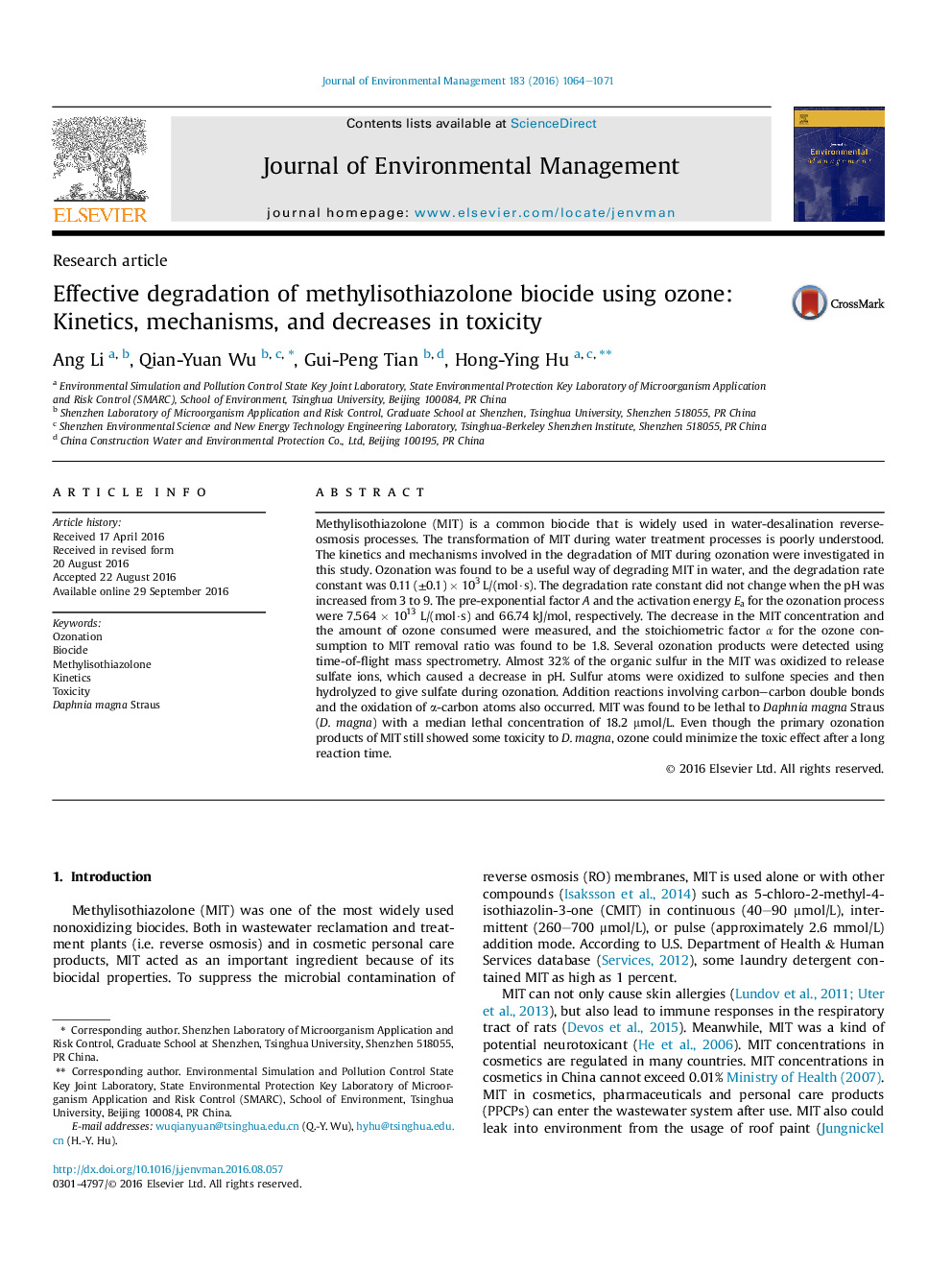| کد مقاله | کد نشریه | سال انتشار | مقاله انگلیسی | نسخه تمام متن |
|---|---|---|---|---|
| 5117244 | 1378118 | 2016 | 8 صفحه PDF | دانلود رایگان |
- Ozone removed methylisothiazolone (MIT) and its toxicity to Daphnia magna Straus.
- MIT ozonation rate constant and activation energy were determined.
- Change of pH from 3 to 9 had limited impact on MIT ozonation rate.
- MIT ozonation pathway had been proposed using time-of-flight mass spectrometry.
- Relationship between ozone consumption and MIT reduction were tested for application.
Methylisothiazolone (MIT) is a common biocide that is widely used in water-desalination reverse-osmosis processes. The transformation of MIT during water treatment processes is poorly understood. The kinetics and mechanisms involved in the degradation of MIT during ozonation were investigated in this study. Ozonation was found to be a useful way of degrading MIT in water, and the degradation rate constant was 0.11 (±0.1) Ã 103 L/(mol·s). The degradation rate constant did not change when the pH was increased from 3 to 9. The pre-exponential factor A and the activation energy Ea for the ozonation process were 7.564 Ã 1013 L/(mol·s) and 66.74 kJ/mol, respectively. The decrease in the MIT concentration and the amount of ozone consumed were measured, and the stoichiometric factor α for the ozone consumption to MIT removal ratio was found to be 1.8. Several ozonation products were detected using time-of-flight mass spectrometry. Almost 32% of the organic sulfur in the MIT was oxidized to release sulfate ions, which caused a decrease in pH. Sulfur atoms were oxidized to sulfone species and then hydrolyzed to give sulfate during ozonation. Addition reactions involving carbon-carbon double bonds and the oxidation of α-carbon atoms also occurred. MIT was found to be lethal to Daphnia magna Straus (D. magna) with a median lethal concentration of 18.2 μmol/L. Even though the primary ozonation products of MIT still showed some toxicity to D. magna, ozone could minimize the toxic effect after a long reaction time.
Journal: Journal of Environmental Management - Volume 183, Part 3, 1 December 2016, Pages 1064-1071
